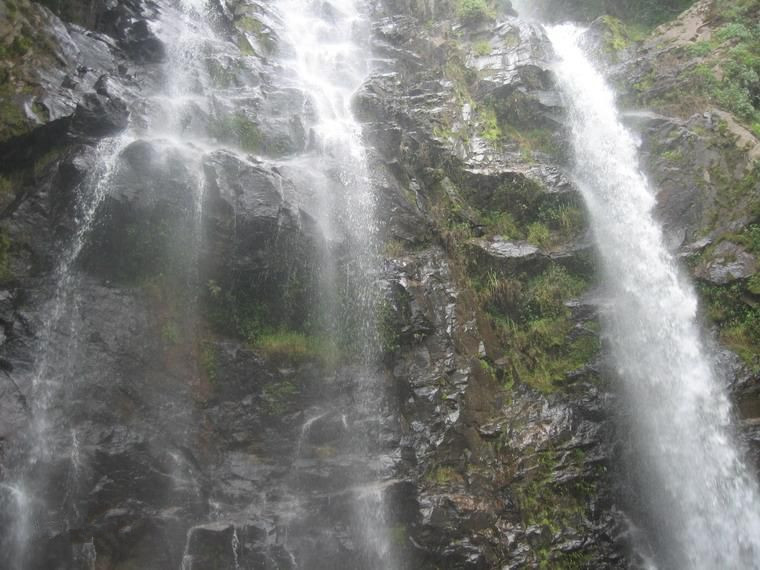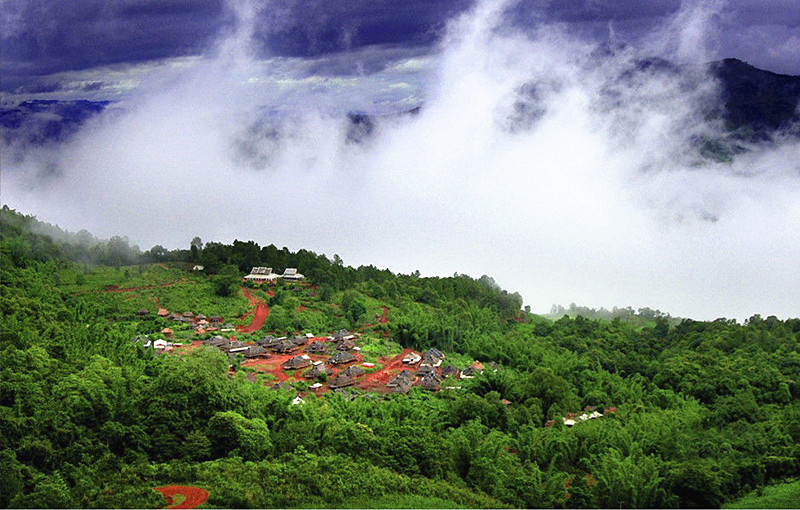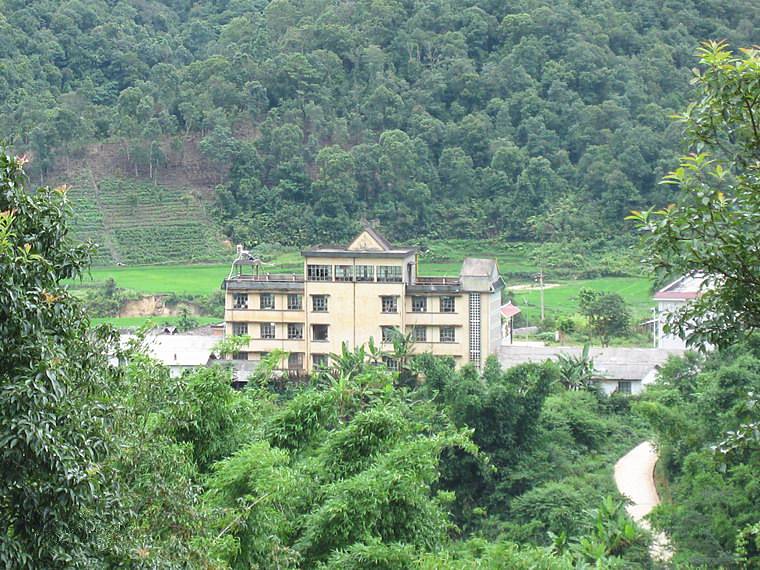
Bulangshan Bulang Ethnic Town in Menghai County, Xishuangbanna
Bulangshan Bulang Ethnic Township (布朗山布朗族乡) is located in the southeastern part of Menghai County (勐海县), Xishuangbanna Prefecture (西双版纳州), Yunnan Province (云南省), between 99°56′–100°41′ E and 21°28′–22°28′ N. It borders Damenglong Town (大勐龙镇) of Jinghong City (景洪市) to the east, and shares a 70.1 km borderline with Myanmar to the south and west. It is adjacent to Daluo Town (打洛镇) in the northwest and Menghun Town (勐混镇) in the north and northeast. The township government is seated in Meng’ang (勐昂), at an elevation of 1,220 meters, about 91 kilometers from the county seat.
History and Culture
Bulangshan Bulang Ethnic Township (布朗山布朗族乡) is the only officially designated Bulang ethnic township in China. More than 2,000 years ago, the ancient Pu people settled here and called it “Puman Mountain (濮满山).” In ancient times, Mansang (曼桑) and Manxin (曼新) were under the jurisdiction of the Cheli Xuanwei Department (车里宣慰使司), while the rest belonged to the Menghun Tusi (勐混土司). In 1950, it was part of Menghun District; in 1954, Bulang Mountain District was established, which later belonged to Banna Menghai (版纳勐海) in 1957. In 1958, the area was again called Bulang Mountain District. In 1969, it became Wuyi Commune. In 1984, the name Bulang Mountain District was reinstated, and in 1987, it was restructured as Bulangshan Bulang Ethnic Township.
Ethnic Customs
The Bulang people are known for their rich tradition of music and dance. Traditional music is categorized into four types: Suo (索), Sheng (笙), Zai (宰), and Zhuai (拽). Folk dances include singing dances, drum dances, and martial arts dances. Major festivals include the Water Splashing Festival (泼水节), Opening Door Festival (开门节), and Closing Door Festival (关门节). During festivals, Bulang people gather to sing and dance joyfully. Additionally, Bulang boys between the ages of 7 and 12 are expected to spend time in temples as novice monks, learning the Dai language and basic Buddhist scriptures under the guidance of monks.
Climate and Best Travel Time
Bulangshan Bulang Ethnic Township (布朗山布朗族乡) has a subtropical monsoon climate with mild temperatures, plenty of sunshine, and distinct wet and dry seasons. It is humid with little or no frost throughout the year. Winter and spring are often foggy, while summer and autumn tend to be rainy. The average annual temperature is 19.6°C, and the average annual rainfall is 1,703.7 mm. The best time to visit is from November to April, when the weather is cool and suitable for outdoor activities.



Recommended Attractions and Visit Duration
- Lao Man’e Ancient Village: A traditional Bulang village where you can experience Bulang culture and lifestyle. Recommended visit: 2–3 hours.
- Banzhang Ancient Village: Famous for high-quality Pu’er tea. Visitors can tour tea gardens and factories to learn about the tea-making process. Recommended visit: 2–3 hours.
- Sanduoshan Mountain: The highest point in Bulangshan, at 2,082 meters above sea level. Ideal for hiking and enjoying stunning natural views. Recommended visit: 3–4 hours.
Transportation
- Self-Driving: From Kunming (昆明), take the Kunming–Mohan Expressway to Jinghong (景洪市), then proceed to Menghai County (勐海县). The total distance is about 500 kilometers and takes approximately 6 hours.
- Public Transport: First, reach Jinghong City (景洪市), then take a long-distance bus to Menghai County (勐海县), and transfer to a local rural bus or taxi to Bulangshan Bulang Ethnic Township (布朗山布朗族乡).
Cuisine
The local cuisine centers around Bulang-style dishes. Recommended specialties include:
- Sour Tea: A traditional Bulang beverage with a unique taste.
- Grilled Meat: Made with fresh local ingredients and full of flavor.
- Bamboo Rice: Rice steamed inside bamboo tubes, infused with a subtle bamboo aroma.
Shopping
Local specialties include Pu’er tea (普洱茶), handicrafts, and other regional products, available at village markets and tea gardens.
Accommodation
There are a few guesthouses and homestays in Bulangshan Bulang Ethnic Township (布朗山布朗族乡), with basic amenities. For higher standards, it is recommended to stay in hotels in Jinghong City (景洪市) or Menghai County (勐海县).
Travel Tips
- Respect local customs, especially when visiting temples and villages.
- When exploring mountainous areas, be prepared for insects; bring insect repellent and appropriate protection.
- Follow border regulations in frontier areas; do not cross the border without permission.
Suggested Itinerary
Day 1: Arrive at Bulangshan Bulang Ethnic Township (布朗山布朗族乡), check into a homestay, then visit Lao Man’e Ancient Village (老曼峨古寨) to experience traditional Bulang culture.
Day 2: Visit Banzhang Ancient Village (班章古寨), tour the tea gardens and factories, then head to Sanduoshan Mountain (三垛山) for hiking and sightseeing.
Day 3: Shop for local specialties at the village market, then conclude your trip.
Bulangshan Bulang Ethnic Township (布朗山布朗族乡) is a charming destination filled with natural beauty and rich ethnic culture. Here, you can experience the unique borderland atmosphere and explore the traditions of the Bulang people. We hope you have an unforgettable journey in Bulangshan.

 7 Days GolfingTour
7 Days GolfingTour
 8 Days Group Tour
8 Days Group Tour
 8 Days Yunnan Tour
8 Days Yunnan Tour
 7 Days Shangri La Hiking
7 Days Shangri La Hiking
 11 Days Yunnan Tour
11 Days Yunnan Tour
 6 Days Yuanyang Terraces
6 Days Yuanyang Terraces
 11 Days Yunnan Tour
11 Days Yunnan Tour
 8 Days South Yunnan
8 Days South Yunnan
 7 Days Tea Tour
7 Days Tea Tour
 8 Days Muslim Tour
8 Days Muslim Tour
 12 Days Self-Driving
12 Days Self-Driving
 4 Days Haba Climbing
4 Days Haba Climbing
 Tiger Leaping Gorge
Tiger Leaping Gorge
 Stone Forest
Stone Forest
 Yunnan-Tibet
Yunnan-Tibet
 Hani Rice Terraces
Hani Rice Terraces
 Kunming
Kunming
 Lijiang
Lijiang
 Shangri-la
Shangri-la
 Dali
Dali
 XishuangBanna
XishuangBanna
 Honghe
Honghe
 Kunming
Kunming
 Lijiang
Lijiang
 Shangri-la
Shangri-la
 Yuanyang Rice Terraces
Yuanyang Rice Terraces
 Nujiang
Nujiang
 XishuangBanna
XishuangBanna
 Spring City Golf
Spring City Golf
 Snow Mountain Golf
Snow Mountain Golf
 Stone Mountain Golf
Stone Mountain Golf













